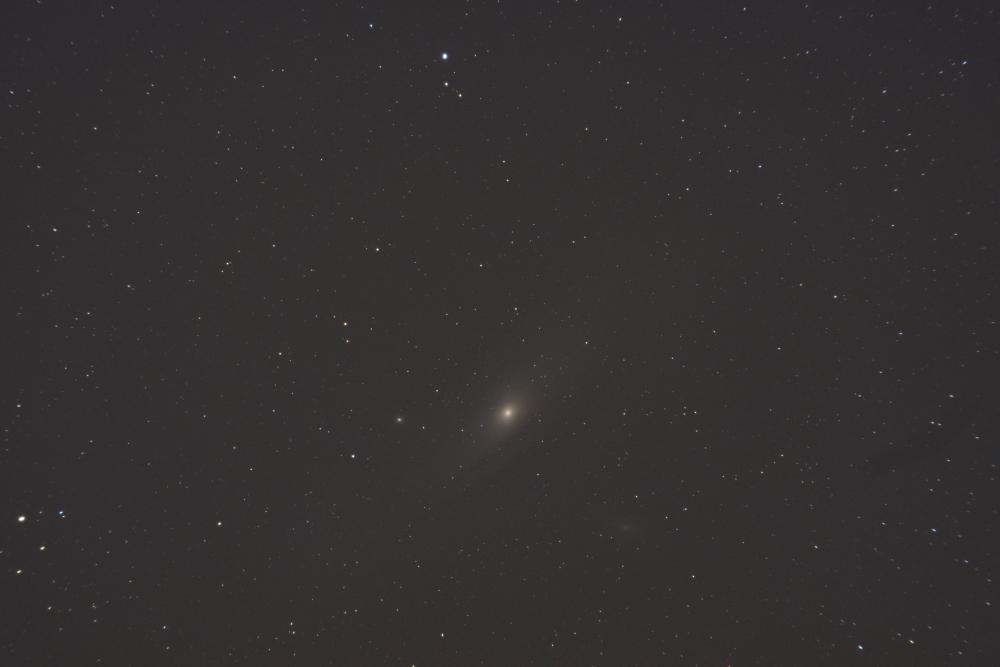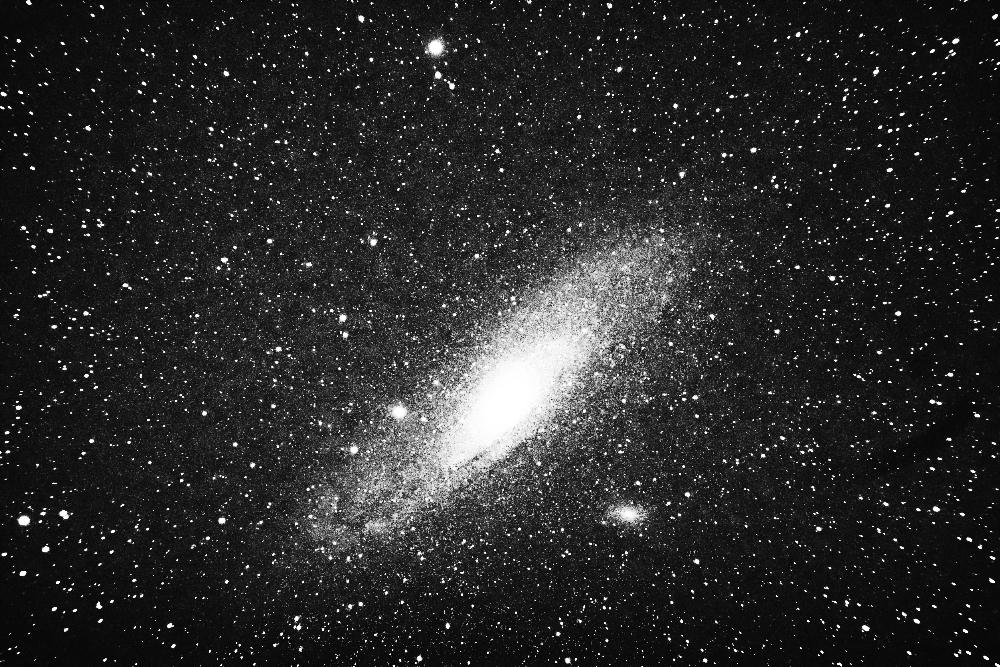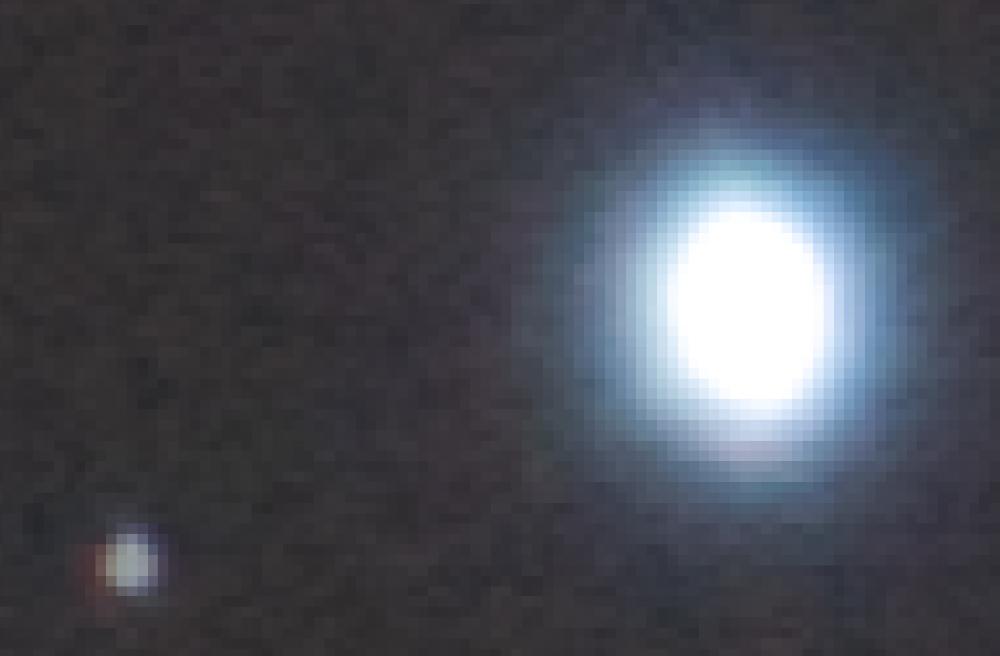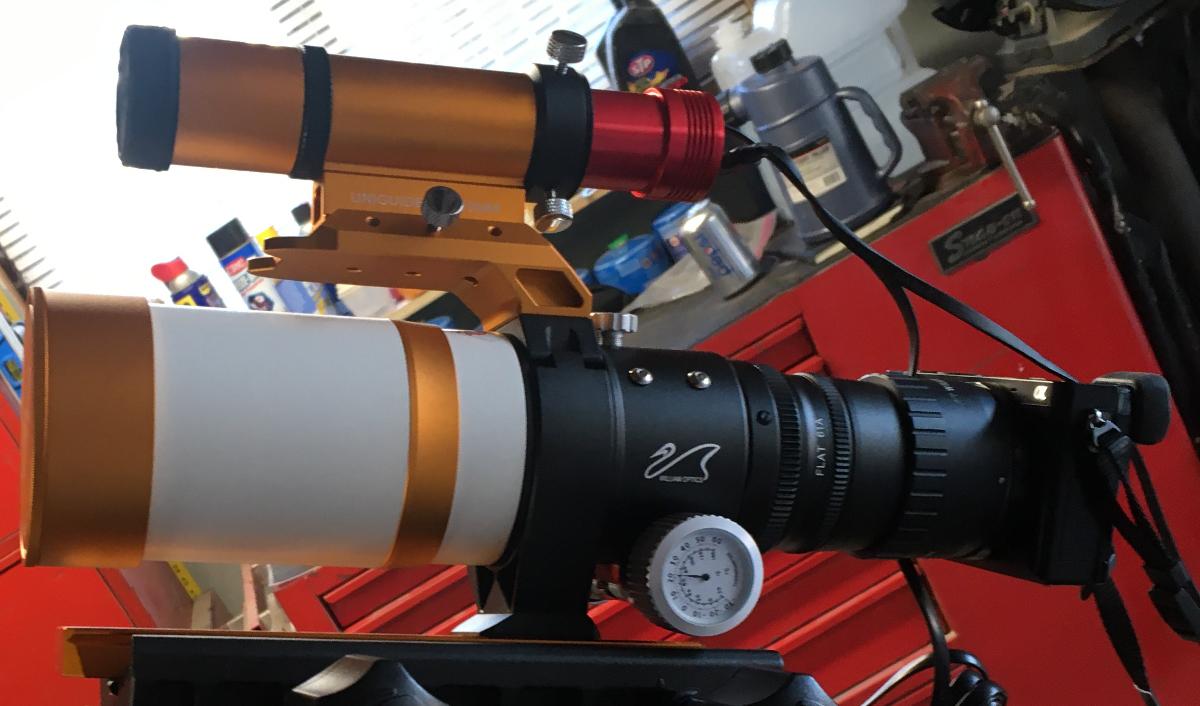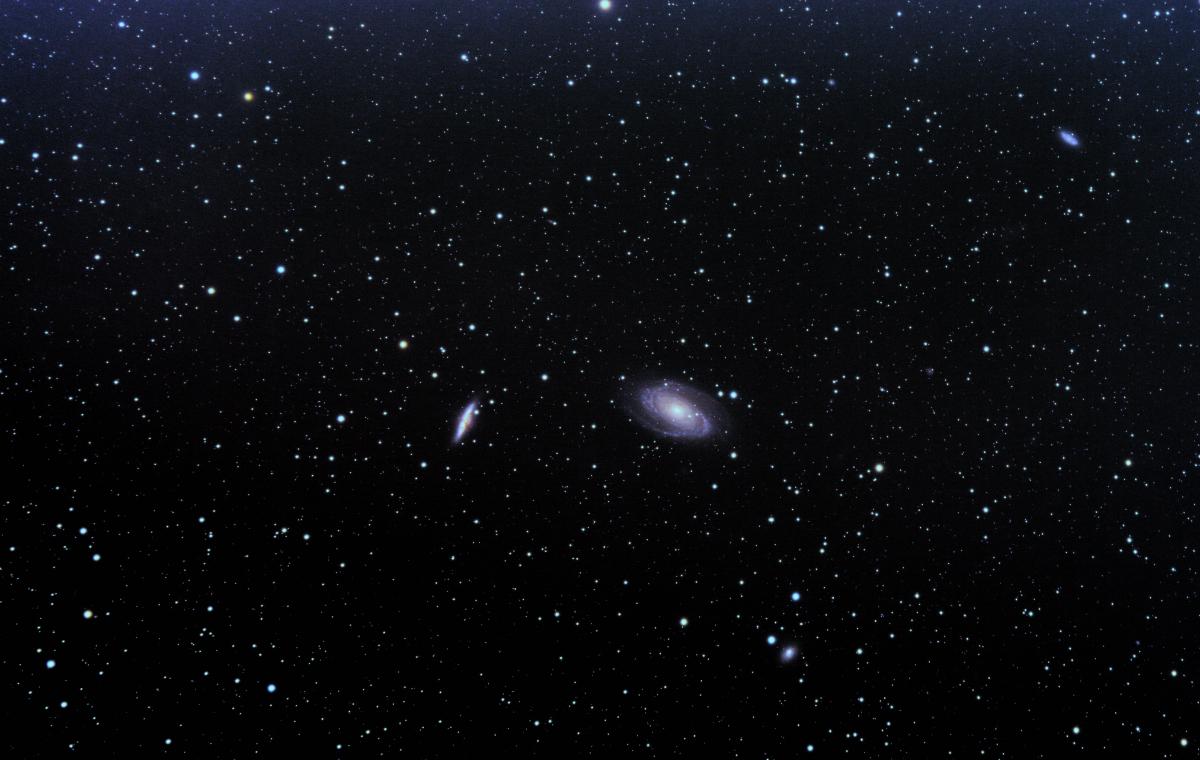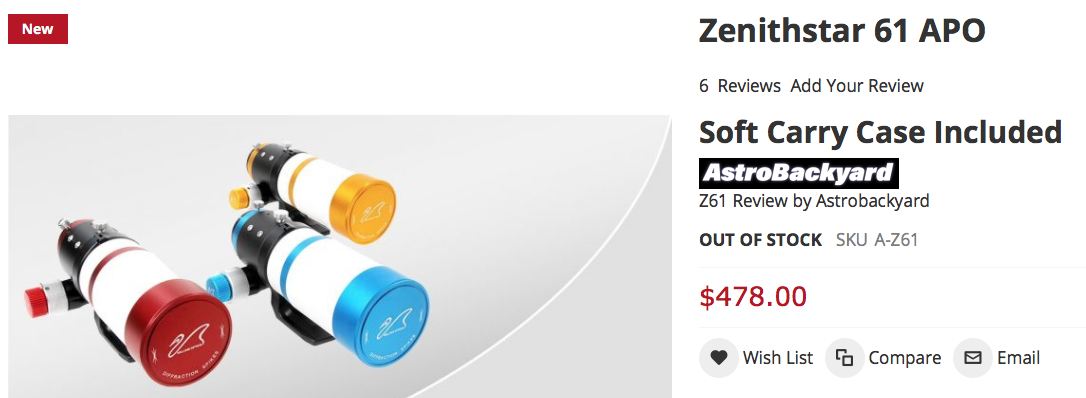Topic
Sony A6000 a Cosmic Time Machine
Forum Posting
A Membership is required to post in the forums. Login or become a member to post in the member forums!
Home › Forums › Campfire › Photo Gallery › Sony A6000 a Cosmic Time Machine
- This topic has 47 replies, 12 voices, and was last updated 3 years, 2 months ago by
 Nick Gatel.
Nick Gatel.
-
AuthorPosts
-
Dec 6, 2020 at 8:45 pm #3687590
Cool stuff Nick. Thanks for sharing.
Dec 6, 2020 at 9:45 pm #3687601Nick…so you’re saying that if human eyesight was attuned to different frequencies of light, the Andromeda system would appear larger than the moon, to our naked eyes? Because it actually emits more light, but not in a spectrum that we can see?
even though it’s so much further away?…
Dec 7, 2020 at 12:55 am #3687609Nick…so you’re saying that if human eyesight was attuned to different frequencies of light, the Andromeda system would appear larger than the moon, to our naked eyes? Because it actually emits more light, but not in a spectrum that we can see?
Both.
If we take the lamp shade off a lamp in our living room, it is really bright. If we put the lamp on the curb in front of our house and then walk to the corner of the street, we will barely be able to see the light. But the amount of light is puts out hasn’t changed.
The moon just reflects light from the sun. Andromeda’s one trillion plus stars generate of light. Plus some frequencies we can’t see. Our sun is puny compared to some of the stars in Andromeda in both size and luminosity.
We can only see red, green, and blue. Plus we see twice as much green as we see of red or blue. Cameras have RGB filters that replicate this so the picture looks like what we see when we take a picture of a person, landscape, etc. Actually the filters are RGBG.
When processing astrophotography images we stretch the band width of all 3 and also adjust brightness and contrast. By stretching we are intensifying some of the individual pixel’s luminosity and adjusting the color. We are not coloring, painting, cutting, pasting, etc. We are only working with the data our camera recorded.
I’ve attached some pictures. All were taken with the Sony A6000 connected to a 61mm aperture telescope. The telescope now works like a prime lens. Meaning I cannot “zoom” the image taken. All I can do is focus it.
In all pictures I reduced the resolution to 1000 X 667 pixels so they would be small enough to upload to BPL. I did not crop or enlarge any dimensions. All four are exactly the same dimensions.
Andromeda (M31) single image below with no processing.

In the next image (below) I stretched the data. This is the data the camera recorded but we can’t see with our eyes. It is real data, only we can’t see it. Both pictures have about 25 million pixels and I simply intensified the ones we can’t see with eyes or even in my telescope.
Note that in both pictures there are three stars at the top center and four prominent stars at the lower left. All are in the same location in both pictures. These stars in the picture below are larger in diameter because I intensified the pixels around the center of each star . . . pixels that are there, but we can’t normally see.

The brightness of star at the top of both pictures has a LOT of pixels. Below is a super enlargement and each square is a pixel.

The picture of Andromeda I stretched (quickly for this post) is pretty ugly. It is difficult to capture an image millions of miles away on a dinky camera sensor. But if we take 200 pictures and stack them, we have more to work with. By stacking, we take the largest stars, maybe 250 or 500 and stack each picture that can perfectly align all of these stars, one on top of another. If we cannot match all the stars, let’s say because Elon Musk’s satellites obscured them, then we reject those pictures and don’t stack them. With 150 good pictures out of 200, we have a composite that won’t require as much stretching of luminosity, contrast, color etc.
Now let’s look at two pictures of the moon taken with the same camera and same telescope. The same dimensions as the earlier Andromeda pictures and the moon is much smaller that our stretched Andromeda image.

 Dec 7, 2020 at 3:03 pm #3687670
Dec 7, 2020 at 3:03 pm #3687670Those are spectacular photos. Kudos to you!
And for reference, I have a bunch of telescopes, up to a 17in reflector, but none of them capture what you have with you gear–and painstaking efforts!
Dec 7, 2020 at 3:58 pm #3687673Thanks Ben and Paul!
17 inch reflector is a huge serious instrument.
Dec 7, 2020 at 11:10 pm #3687747Dec 7, 2020 at 11:29 pm #3687751A truss Dobsonian. Cool! Did you build it yourself?
Dec 9, 2020 at 6:26 pm #3688041Jeffrey asked about the size of Andromeda. It is moving towards us and will merge with our Milky Way in a few billion years. Here’s what it will look like.
 Dec 17, 2020 at 6:38 pm #3689602
Dec 17, 2020 at 6:38 pm #3689602Astrophotography is much, much different than normal photography. Aside from a different approach in capturing and processing images, dealing with equipment really complicates matters — you aren’t just attaching lenses to camera bodies, but using adapters and other optical equipment to connect a camera to a telescope. With the mini-telescope and the Sony A6000 camera body, I’ve been using a field flattener to eliminate vignetting, plus there are adapters that add space between the telescopes objective lens and the camera’s sensor.
I found there wasn’t enough back-focus between the camera sensor and the telescope lens, so focus wasn’t quite correct and vignetting was still present at the edges of the images. I moved the camera back 12.9mm and reshot the images. Much better.
Walking Man Nebula and Orion Nebula below.
Since we live at the base of a huge mountain, there is almost always turbulence in the atmosphere. Seeing conditions are usually “average” on a good night. Occasional “above average” for a few hours on a good night.

Even though this is a low resolution image to meet the forum software limits, I’m pretty pleased with it. Zooming in still reveals a lot of detail.
Dec 17, 2020 at 6:59 pm #3689603Gorgeous shot Nick.
Dec 18, 2020 at 8:41 am #3689652Note to self, check the BPL Photo Gallery forum more than once per year.
Gadzooks Nick! These are incredible images!
Jan 7, 2021 at 2:29 am #3692508My Cosmic Time Machine (Sony A6000 APS-C mirrorless camera) traveled to the Horsehead Nebula this week.

The white telescope has an aperture of 61mm (2.4 inches) and the Sony A6000 is attached to it in the picture above.
The light that created the image of the Horsehead Nebula (below) took over 1,300 years to travel to earth, leaving the Horsehead Nebula around the year 646 AD.
So what was going on here on planet earth at that time? The biggest event was the rise of Islam and the Muslim conquest of the Levant and Syria. About 30 years later, the First Arab Siege of Constantinople occurred, and by the end of the 7th century, the Byzantine Empire was on the decline.
The Arabs made major contributions to the sciences and philosophy. Today 210 visible stars still have Arabic names.
I have never seen the Horsehead Nebula through a telescope. It is not visible with my 8″ aperture scope. Where I live, I would need at least a 14″ aperture scope and it would still be faint and difficult to see.
But with my itsy-bitsy 2.4″ telescope and the camera I was able to get a decent image with some time exposures.
I rotated the image 90 degrees counter-clockwise, for a more traditional view.
The big bluish star in the center is Alnitak (an Arabic name), which is the eastern (left) star of Orion’s belt (for those who live in the northern hemisphere). It is one of the 3 stars that make up Orion’s belt, the other two being Alnilam and Mintaka, which are also Arabic names.
Below Alnitak is the Flame Nebula. My image still needs a little bit of post-processing work. The center of the Flame Nebula is too orangish, and the image could use a little more red behind the horse’s head.
 Jan 7, 2021 at 7:28 am #3692520
Jan 7, 2021 at 7:28 am #3692520nice photos
our numbers are “arabic”. Thank god we aren’t still using Roman numerals. They discovered the number “0”…
Jan 7, 2021 at 10:39 am #3692541They discovered the number “0”…
Are you sure?
Jan 7, 2021 at 10:43 am #3692542FWIW Wikipedia:
The first recorded zero appeared in Mesopotamia around 3 B.C. The Mayans invented it independently circa 4 A.D. It was later devised in India in the mid-fifth century, spread to Cambodia near the end of the seventh century, and into China and the Islamic countries at the end of the eighth.
Jan 9, 2021 at 1:19 pm #3692916So Ms. Sony A6000 just returned from a trip into the past to the Rosette Nebula, capturing the image that took 5,000 years to reach us here on earth.

Young stars are formed in the center. The Rosette is an emission nebula. In an emission nebula, the stars excite the hydrogen and Oiii atoms in the nebula, causing the atoms to emit their own radiation. We really can’t see the emission colors, so I had to use a narrowband filter to isolate the hydrogen-alpha, hydrogen-beta, and ionized oxygen light spectrum bands.
Here’s a picture (courtesy of Trevor Jones) showing the Rosette’s location in the night sky.
 Jan 9, 2021 at 1:27 pm #3692918
Jan 9, 2021 at 1:27 pm #3692918You really have such wonderful photos Nick.
Jan 9, 2021 at 3:41 pm #3692961You really have such wonderful photos Nick.
Thanks. But if I were to post them on an astronomy forum I’d probably be laughed at.
I re-calibrated the horsehead/flame nebulae.
 Jan 20, 2021 at 4:48 am #3694656
Jan 20, 2021 at 4:48 am #3694656This past weekend Ms. Sony traveled 11.8 million years into the past for a cigar.
That is how long it took the light to get to earth, so this is what it looked like 11.8 million years ago. It may not even exist anymore.
The long vertical image in the center is the Cigar Galaxy and just to the right is Bode’s Galaxy. There is also a small elliptical galaxy in the upper right hand corner, and a fourth galaxy just below the two large stars under Bode’s close to the bottom of the image.

Once there, Ms. Sony decided to take a closer look at Bode’s Galaxy before coming home.
 Jan 20, 2021 at 8:55 pm #3694820
Jan 20, 2021 at 8:55 pm #3694820I know I’m repeating myself but great stuff Nick!
Jan 21, 2021 at 1:04 pm #3694918Thanks again, Ian.
This is a consequence of the pandemic. Instead of binge watching Netflix like many people, I have been concentrating and expanding my interests.
Astrophotography is much, much different than photography, and as a complete novice I am working to gain more knowledge and skill. I did have to buy a couple new pieces of equipment and my next purchase will be a larger telescope suitable for astrophotography. My 8″ Schmidt-Cassegrain telescope is not ideal for imaging deep sky objects. I am using a 2.4″ refractor scope for most imaging. Something like a 4″ refractor will do much better on smaller objects like Bode’s galaxy.
However, today you can’t buy a decent 4″ refractor, everyone has been sold out for months. Manufacturers like Celestron, Meade, Takashi, William Optics, Edmund Scientific, Orion, Skywatcher, Astro Physics, Astro Tech, etc. do not have a single quality scope in stock, and their dealers have zero. Scopes that are just above a toy level are available, but almost anything with quality optics backordered for several months.
Jan 21, 2021 at 2:12 pm #3694932“My 8″ Schmidt-Cassegrain telescope is not ideal for imaging deep sky objects. I am using a 2.4″ refractor scope for most imaging. Something like a 4″ refractor will do much better on smaller objects like Bode’s galaxy.”
English please. Google translate isn’t helping here :)
I’m not sure how much it plays into this but the pandemic has had a real strange impact on a wide range of markets and it’s difficult to predict where everyone will focus their attention next.
Kayaks and canoes were wiped out this summer, and the scraps that were left on the local used market had a covid tax. We sold our boat at fair market value. I had people messaging me from Montana because I don’t (and won’t) add a Covid tax. Same for our mountain bikes.
Vehicle market is really weird. My 30 year old jeep magically increased in value by about $3000, which is crazy since it was worth about $5000 prior to the pandemic. Apparently everyone wants a Porsche. I’m mildly interested in restoring an old 944/924 once I’m done with the Jeep but they’ve been picked through although you can find the occasional scraps, but a fraction of what there once was and forget finding a turbo.
I’m not sure if it’s related but have to wonder if people were looking for things to do this summer and bought up all the telescopes so they would have something to do with their kids in lieu of the Disney vacation they had to cancel.
None of this has anything to do with the OP.
Cool pics! There. Now I’m back in the land of the BPL righteousness.
Jan 21, 2021 at 3:30 pm #3694948“My 8″ Schmidt-Cassegrain telescope is not ideal for imaging deep sky objects. I am using a 2.4″ refractor scope for most imaging. Something like a 4″ refractor will do much better on smaller objects like Bode’s galaxy.”
English please. Google translate isn’t helping here :)
To take that larger image of Bode’s Galaxy I had to use my 8″ telescope with the A6000 connected to it. This telescope doesn’t have glass in it, just two mirrors. One is 8 inches and the second is much smaller. Light enters from the open end, travels all the way to the bottom where the 8″ mirror is, then is reflected back to a small mirror at the top, which then reflects it back to a small tube at the bottom. So the light is bounced around 3 times for a total of 2032 mm. Basic design created by Issac Newton, only he just bounced the light twice.
With a camera, the design causes extreme vignetting, so a large crop is necessary. The other problem is the focal length of 2032 mm, plus a slow f/10 aspect ratio. So this requires long exposures. For the large Bode’s image, I took 100 five-minute exposures (then stacked them), which taxes the ability of the mount to perfectly rotate with the movement of the sky.
My 2.4″ scope has glass in it. Two FPL-53 glass elements. Focal length of 360mm @ F/5.9. Very similar to your camera lenses. So I can take shorter exposures and it is easier for the mount to track at this small focal length. I also added an addition field flattener adapter, so there is zero vignetting. Want one? Nada. Sorry, out of stock from the manufacturer.

Yep, lots of people bought their first scope this year, versus the normal y ear of folks just upgrading equipment. I read somewhere that something like 40% of all scopes sold were by first time buyers. Same goes for lots of things like RV and boats with record sales.
It is what it is. I’m not complaining. I’ll continue to do some astro work with the 8 inch, it is better than nothing. And it is better than Netflix, CNN, Fox News, and similar time-waste black holes.
-
AuthorPosts
- You must be logged in to reply to this topic.
Forum Posting
A Membership is required to post in the forums. Login or become a member to post in the member forums!
Our Community Posts are Moderated
Backpacking Light community posts are moderated and here to foster helpful and positive discussions about lightweight backpacking. Please be mindful of our values and boundaries and review our Community Guidelines prior to posting.
Get the Newsletter
Gear Research & Discovery Tools
- Browse our curated Gear Shop
- See the latest Gear Deals and Sales
- Our Recommendations
- Search for Gear on Sale with the Gear Finder
- Used Gear Swap
- Member Gear Reviews and BPL Gear Review Articles
- Browse by Gear Type or Brand.

